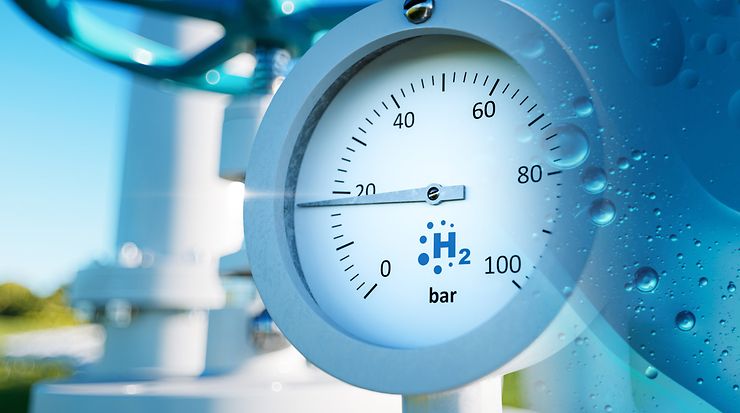Working Committee 4 - Quality infrastructure

The working committee "Quality Infrastructure" is responsible for coordinating its subordinate sub-working groups. These include the area of gas quality, which deals with chemical analytical issues, and the area of gas meters and other measurement technology required for measuring hydrogen in the gas network, as well as test methods for determining characteristic values under the influence of hydrogen and the design of materials and components for use in contact with hydrogen.
WC 4 Quality Infrastructure includes the following SWCs and WGs:
SWC 4.1 - Measurement Technique
- WG 4.1.1 - Gas analysis
- WG 4.1.2 - Hydrogen measurement technology and billing methods
SWC 4.2 - Materials and substances
- WG 4.2.1 - Metallic materials
- WG 4.2.2 - Composites and plastics
SWC 4.3 - Components
- WG 4.3.1 - Components for infrastructure
- WG 4.3.2 - Components for applications and technologies
Working committee 4 - Quality Infrastructure
Tasks of the working group 4.1.1 – Gas analysis
The working group "Gas analysis" deals with issues concerning the chemical composition and physical quantities derived from it for hydrogen-containing gas mixtures, pure and ultra-pure hydrogen along the analytical process, in particular method selection and implementation, sampling, measuring instrument qualification, production and application of calibration gases, measurement and evaluation strategy, conversion and documentation as well as quality assurance measures.
Tasks of the working group 4.1.2 – Hydrogen meter
The "Hydrogen meters" working group (WG) deals with questions concerning the hydrogen suitability of different types of gas meters developed for natural gas applications, various methods for the measurement procedure and the conversion during the calibration of the meters. The gas meters considered for measurement with pure hydrogen, as well as hydrogen admixtures, include both the household sector and commercial and industrial meters.
Tasks of the working group 4.2.1 – Metallic materials
The "Metallic Materials" working group is concerned with test methods for determining material properties under the influence of hydrogen on metallic materials. Leakage caused by hydrogen exposure is also considered.
Tasks of the working group 4.2.2 – Composites and plastics
The "Composites and plastics" working group is concerned with test methods for determining material properties under the influence of hydrogen on composites and plastics.
Tasks of the working group 4.3.1 – Components for infrastructure
The scope of the working group includes the following topics:
- Shut-off valves for hydrogen transport
- Shut-off and tapping valves for hydrogen distribution
- Shut-off valves for hydrogen installation
- Components in hydrogen supply systems
- Components in gas installations
The working group deals with the question of hydrogen suitability for the topics listed above.
Tasks of the working group 4.3.2 – Components for applications and technologies
The "Components for applications and technologies" working group (WG) deals with the development of technical framework conditions as well as product requirements for components of the installation.
This includes safety devices such as flow monitors and sockets for hydrogen installations. It also includes hoses for various applications, a proportion of pipes made of metallic and non-metallic materials and associated connection systems, filters, elastomers, gasket materials and seals made from them (including seals that can withstand higher thermal loads), lubricants and sealants (anaerobic or non-hardening) and PTFE sealing tapes/threads.

